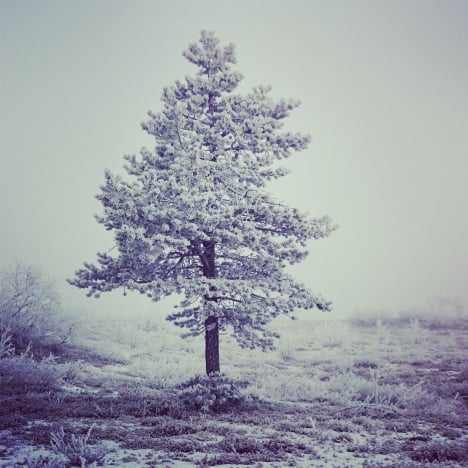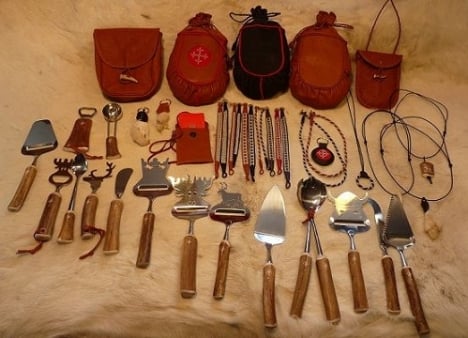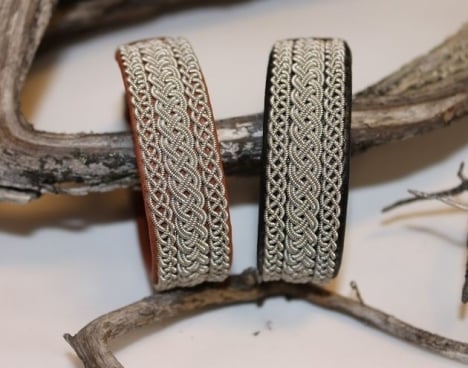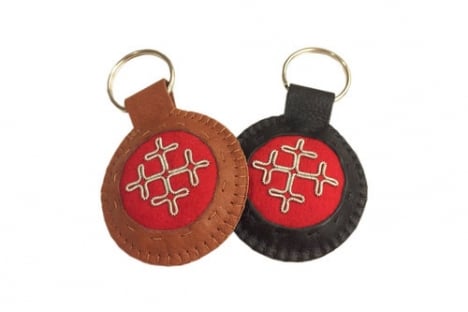Karesuando. It may sound like an obscure martial art – and you'd be right about the obscure part, at any rate. With a population of just 300 at last count, Karesuando is the northernmost settlement in Kiruna – the northernmost municipality in Sweden.
“It’s just about as far north as you can get,” Peter Siikavuopio tells The Local, in a lilting accent reminiscent of Finnish.
Indeed, Karesuando is located right on the border of Finland – literally. One side of the icy river is Sweden, but cross the bridge in the middle of town and you’ll be in Finland. The village is traditionally Finnish-speaking, although this side of it has been part of Sweden for 200 years.
When The Local catches up with Siikavuopio he has just returned from a walk in the woods – never mind that it’s -7 degrees and snowing. For him it’s just an ordinary day.
”I’ve been out looking for materials,” Siikavuopio explains. “Pretty much everything comes from the forest. The reindeer are always dropping horns.”

“How it looks right now,” Peter Siikavuopio says. Photo: Peter Siikavuopio
Siikavuopio, a trapper by trade, is descended from the Sami, the indigenous Finno-Ugric people of the Arctic. And the Swede is an active producer of traditional Sami handicraft – slöjd.
“I’ve always been interested in the craft. It’s just what you do up here. And when you live this far out into the wilderness, there’s not much to choose from,” he jokes.
Siikavuopio owns and runs Trapper Produkter, which sells everything from Sami knives and axes to reindeer-skin backpacks. And of course a few tamer items, such as butter knives, hip flasks, and traditional Sami jewellery.
Although many of his products are made according to traditional Sami handicraft, Siikavuopio said he doesn’t identify himself as Sami.
“It's a sensitive issue up here, and some people want to be called Sami, and others Kvän,” Siikavuopio explains, referring to an ethnic minority descended from Finnish peasants centuries ago.
He adds that those who herd reindeer call themselves Sami, and those who reside permanently in the area, living off fishing and hunting, generally call themselves Kväner.
“But I'm a northern craftsman and a trapper, nothing else,” he says.

A selection of Trapper Products. You can find many of them at The Local Brands.
In addition to selling his products online, he opens his small shop in Karesuando every winter, welcoming a flood of English and French tourists that continues all season long.
Since he started his company in the 1990s, growth has been steady, and the Trapper Produkter brand is one in the most-sold on The Local Brands webshop. But Siikavuopio says he’s in no rush to expand.
“Not all companies need to be these mega massive things,” he explains serenely. ”I can live off of it, and I’m content. And I have time left to go walk in the woods, and spend time with my family.”
His personal favourites are the hand-made bracelets made of reindeer skin.
”They’re very traditional; they’ve been made like this for several hundred years,” he says. “The bracelet itself is reindeer skin, and the button fastener is reindeer horn. They’re very unique.”
Each bracelet takes at least an hour to complete, Siikavuopio says, depending on the design.
“There aren't many people who do this anymore, and certainly not many who make a living off of it. But I do.”
Reindeer horn is just one of many easy-to-find materials in the northern forests, and the skins are purchased from local traders, Siikavuopio explains.
“Norrland is in these products,” he says. “They’re made right here. Nothing is imported. It’s traditional slöjd from the woods”.





 Please whitelist us to continue reading.
Please whitelist us to continue reading.
Member comments